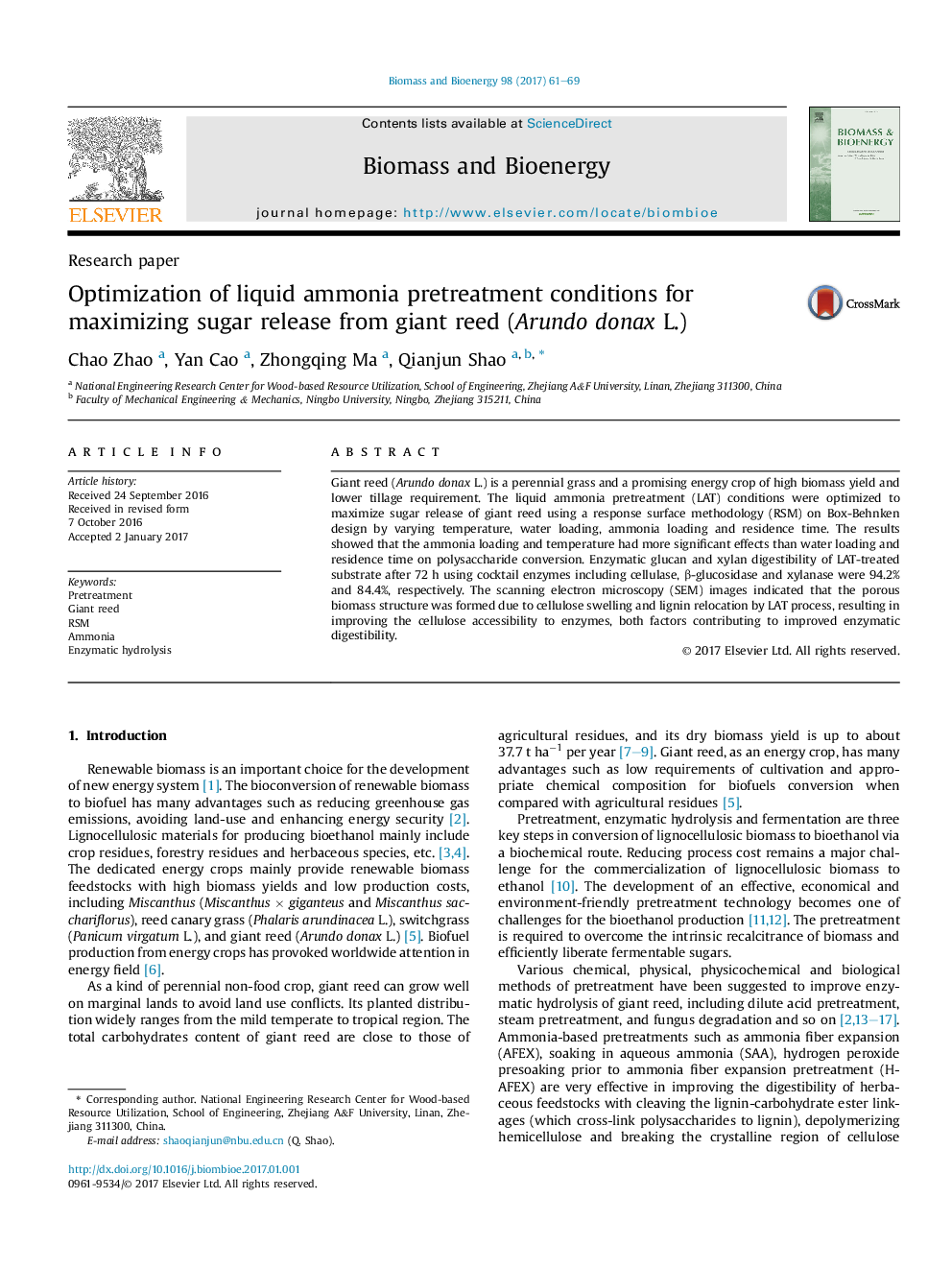| Article ID | Journal | Published Year | Pages | File Type |
|---|---|---|---|---|
| 4996302 | Biomass and Bioenergy | 2017 | 9 Pages |
Abstract
Giant reed (Arundo donax L.) is a perennial grass and a promising energy crop of high biomass yield and lower tillage requirement. The liquid ammonia pretreatment (LAT) conditions were optimized to maximize sugar release of giant reed using a response surface methodology (RSM) on Box-Behnken design by varying temperature, water loading, ammonia loading and residence time. The results showed that the ammonia loading and temperature had more significant effects than water loading and residence time on polysaccharide conversion. Enzymatic glucan and xylan digestibility of LAT-treated substrate after 72 h using cocktail enzymes including cellulase, β-glucosidase and xylanase were 94.2% and 84.4%, respectively. The scanning electron microscopy (SEM) images indicated that the porous biomass structure was formed due to cellulose swelling and lignin relocation by LAT process, resulting in improving the cellulose accessibility to enzymes, both factors contributing to improved enzymatic digestibility.
Related Topics
Physical Sciences and Engineering
Chemical Engineering
Process Chemistry and Technology
Authors
Chao Zhao, Yan Cao, Zhongqing Ma, Qianjun Shao,
